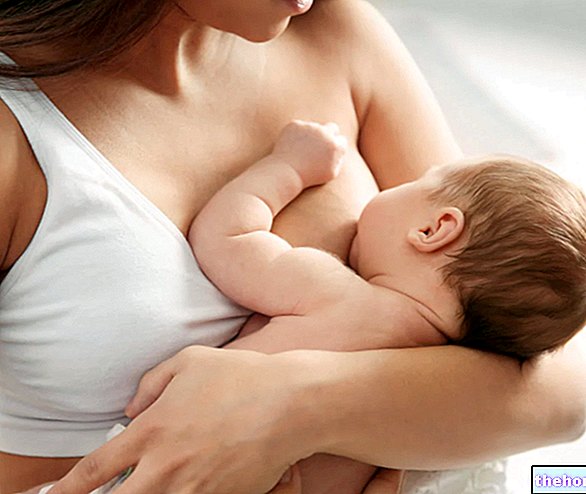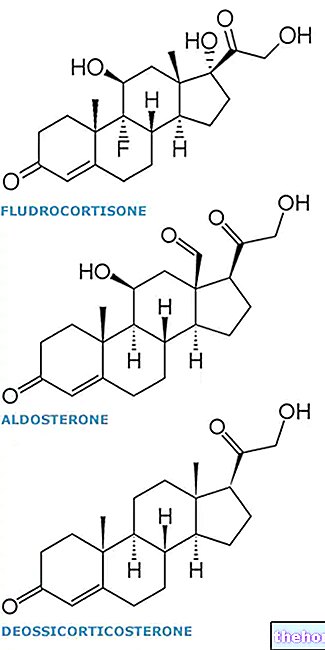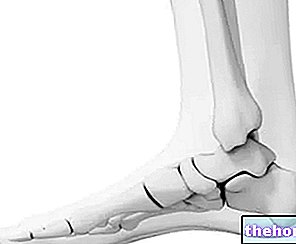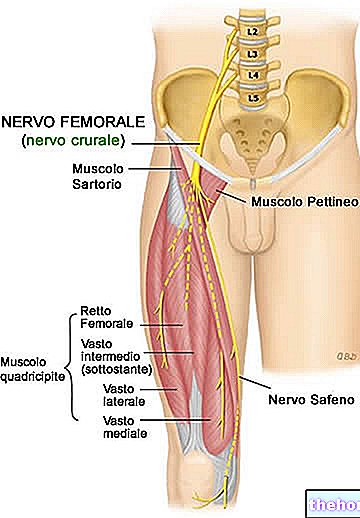Generality
The scrotum is a fibro-muscular skin sac that originates from the base of the penis, protruding between the man's thighs.
Belonging to the male genital system, the scrotum houses the testicles, allowing the production and storage of spermatozoa to take place at temperatures below the body. Furthermore, the scrotum offers some protection to the testicles and - thanks to the important secretion apocrine - it also retains a certain role of sexual appeal in man.
The scrotum therefore contributes to making the continuity of the species possible, allowing male sexual reproduction.
Anatomy of the Scrotum
Also called pocket or scrotal pouch, the scrotum belongs to the male genital system, in particular, to the so-called external genitalia.
Located at the base of the penis, to which it is connected, the scrotum looks like a wrinkled skin sac, inside which the two testicles and epididymis are easily palpable.
The scrotum is made up of skin reinforced by a subcutaneous and muscular layer called the tunica dartos:
- skin covering: thin and elastic, with a rough and corrugated appearance, it is centrally divided, along the median longitudinal line, by a fibrous crest called scrotal septum; two cavities are thus formed, each of which collects a testicle with its epididymis. Externally, the scrotal septum is recognizable by the presence of a median longitudinal cutaneous crest called the perineal raphe, which continues forward on the lower face of the penis and backwards on the perineum.
The skin of the scrotum is thick, wrinkled and pigmented (it is darker than the skin of the rest of the body); it has an important sebaceous secretion, which has the function of sexual recall and further contributes to the thermoregulation mechanism. - dartos: is composed of a dense layer of smooth (involuntary) muscle tissue, and is rich in collagen and elastic fibers that allow the scrotum to be anchored to the base of the penis. The dartos adheres intimately to the deep skin of the scrotum. dartos is then found another muscle, the cremaster.
The muscular component of the scrotum explains its property of stretching or contracting.

Image taken from: https://en.wikipedia.org/wiki/Scrotum
Inside the scrotal bag are contained:
- the testicles or didymes. They are the male gonads, that is, the main reproductive organs of the male. They are two in number and have the task of producing millions of spermatozoa, or the male reproductive cells; they also produce male sex hormones (testosterone), which are fundamental in the development of primary and secondary sexual characteristics and in the control of the genital apparatus.
- the epididymis: located behind the posterior margin of each testicle, they play an important role in the processes of maturation, selection and enrichment of spermatozoa with the liquid part of the sperm
- a tract of the spermatic cord (or funiculus): it is composed of the testicular vessels (arterial, venous and lymphatic), the testicular nerves and the vas deferens. The latter are two small channels that connect each testicle, first, to the seminal vesicles and then to the prostate.The spermatozoa flow through the epididymis and the vas deferens of the two testicles, destined to mix with the seminal fluid to form the sperm.
- a small amount of liquid that facilitates the sliding of the testicles.
Functions of the scrotum
The placement of the scrotum outside the abdominal cavity has the purpose of guaranteeing the testicles the optimal temperature for the production of spermatozoa. In man, in fact, gametogenesis occurs at a few degrees of temperature below normal body temperature.
Testicular temperature control is achieved by contracting the muscles present in the scrotum, capable of increasing or decreasing - depending on the needs - the distance of the testicles from the pelvis.
The descent into the scrotum of the testicles - which in fetal life develop in the abdomen, near the kidney - occurs around the seventh month of gestation.
Failure to descend one or both testicles into the scrotum is called cryptorchidism. This condition is quite common in the newborn, but generally regresses within the first year of age.
Shape of the scrotum
The scrotum has a pedunculated shape, which however tends to vary according to age, external temperature and the state of sexual arousal.
- when it is hot or in the presence of fever: the scrotum tends to relax to favor the descent of the testicles and the lowering of their temperature;
- in cold weather: the scrotum tends to contract to bring the testicles closer to the pelvis and minimize heat loss;
- when the male is sexually aroused the scrotum tends to contract, rising.
The shape of the scrotum also changes over the course of life:
- in the child it appears globular and consistent; it should be noted that at this age the absorption of corticosteroids through the skin of the scrotum is particularly high compared to other skin regions;
- in the adult it stretches becoming ovoid and the skin thickens;
- in the elderly it stretches further, assuming a pyriform and flaccid appearance; moreover, the skin of the scrotum tends to increase in thickness.
In men, a difference in the position of the testicles is quite common; in particular, the left tends to be lower than the right, so the scrotum is also lower on the left side. This feature may have been selected in the course of evolution to prevent the testicles from bumping into each other.
Diseases of the scrotum
The skin of the scrotum can be involved in many inflammatory processes, of a traumatic nature (by repeated rubbing, intertrigo), chemical (eg diaper rash) or infectious (eg fungal infections).
The scrotum can also be affected by boils or sebaceous cysts, while scrotal neoplasms are quite rare.
Sharp pain in the scrotum (acute scrotum) may be due to testicular torsion.
Swelling of the scrotum may be due to an increase in the volume of the scrotal contents, due to the presence of hydrocele, epididymal cysts, local inflammation (epididymitis or orchitis), scrotal hernias (leaking of viscera into the scrotal pocket), testicular tumors or varicocele.
Varicoceles and testicular tumors are more common in the young. Epididymitis and orchitis are often the result of sexually transmitted diseases.






.jpg)









.jpg)











